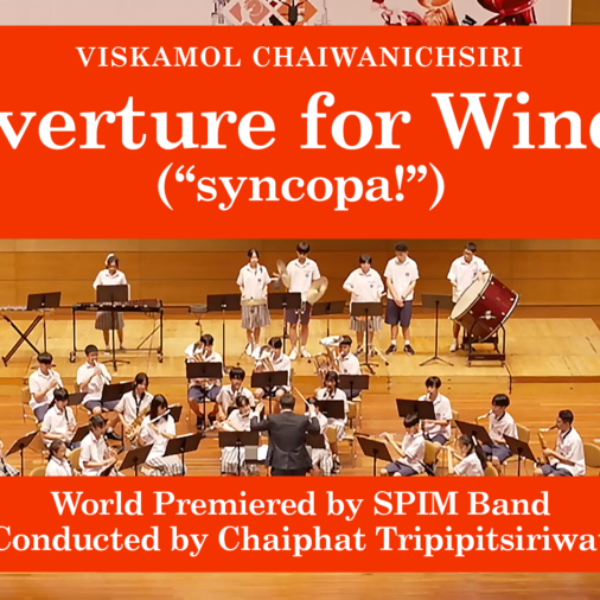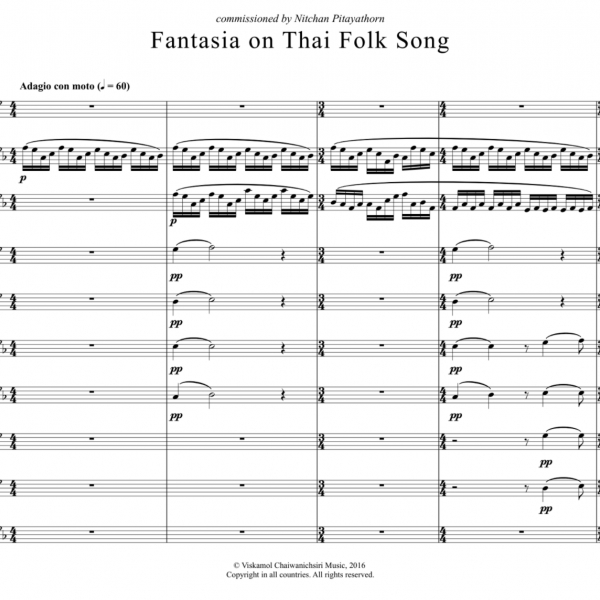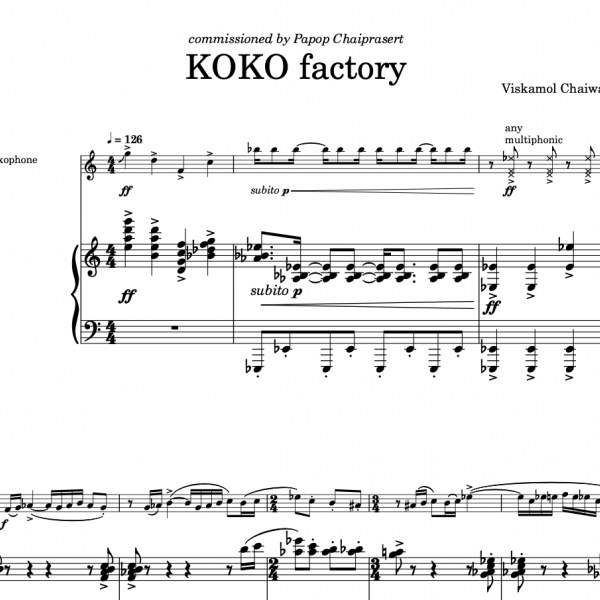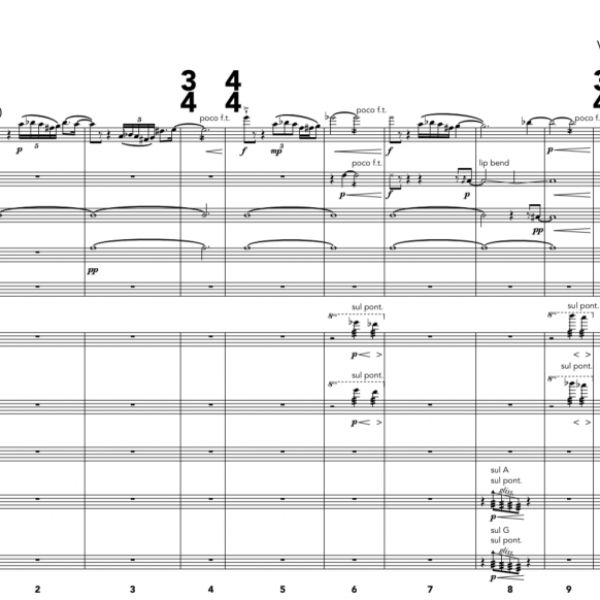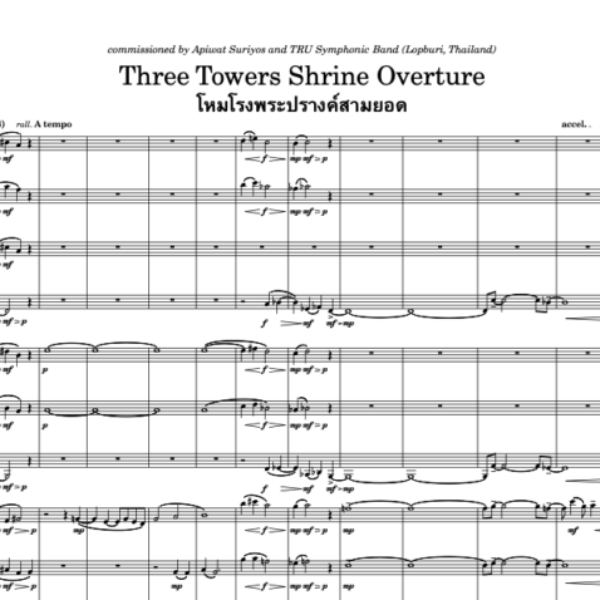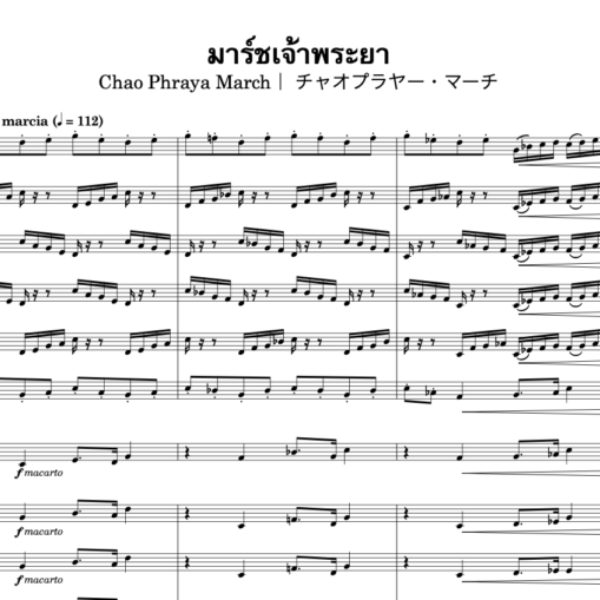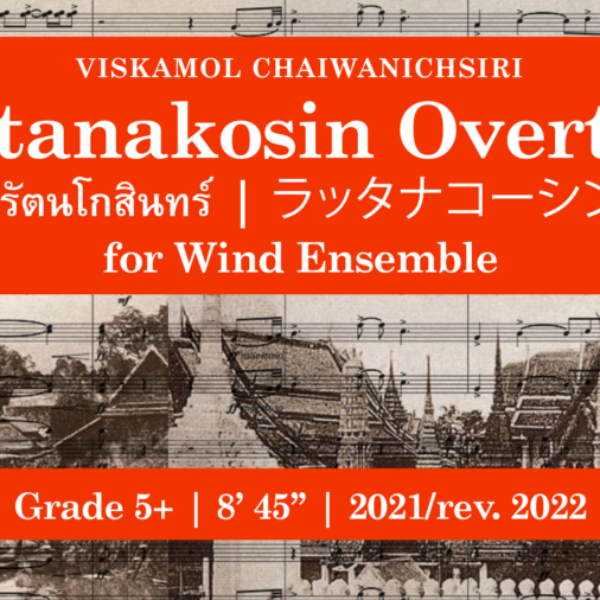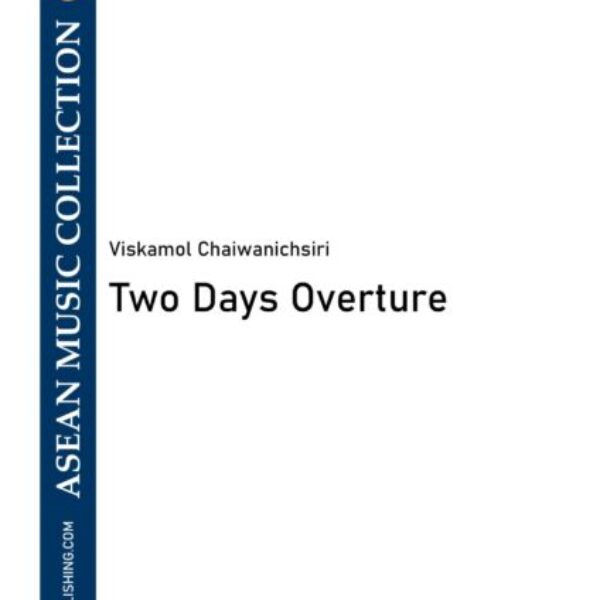Symphony
Orchestra | Grade 5+ | 30′ | 2016
Score + Part (Digital PDF)
(This piece is available upon request)
Symphony for Large Orchestra, Offstage Brass, Jazz Trio, Thai Music Ensemble, Soprano and Choir was composed in late 2016 and performed as a part of Viskamol Chaiwanichsiri (Composer)’s bachelor of music in music composition recital in 2017.
The composition is to be performed in an open space with the audience surrounded by music ensembles: the orchestra and choir in the front, the brass and jazz trio in the side, and horn trio at the back.
This 30 minutes symphony is divided into four movements inspired by the sounds and the musical experience that the composer experienced during the studies at the university.
The first movement (Adagio con dolcezza) explores the sonority of the open space spatial music setting. It is begun with the sound of the orchestral tuning that grows into the block of sound mass juxtaposing between the main orchestra on the stage and the surrounding ensembles.
The second movement (Tempo di valse) is mainly composed with the style of “polystylism”, the use of multiple style in music. The composer have indirectly and directly quote various musical excerpts varies from classical music, jazz, contemporary music, folk tune and Thai music in this movement.
The third movement (Adagio cantabile) follows the tradition of classical and early romantic period symphony writing by including one slow movement in the symphony. This movement is orchestrated from the composer’s early work “Music of Hope” for wind ensemble, however, in this symphony further from the orchestration into orchestra and soprano solo, the music is torn down and disassociated from the original lyrical setting. One might name this movement into the parodic name from the quoted work as “Music of Hope(less)”.
The final movement (Allegro) combined all the forced from the prior movement together, featuring the solo passage for each instruments including the more technical demanding passage for the concertmaster. The idea of the balance and imbalance between consonance and dissonance is mainly feature in this final movement. As commonly appear in many of the symphonic music, toward the ending of the work would featured the climax or the sense of conclusion, in this symphony however, the conclusion may be unsettled leading the audience into different sound world: the cluster of the choral voice, the violin solo, the quotation of the brass fanfare from various symphonic works. The whole conclusive ending of this movement and this symphony lead to the first note of the symphony, the orchestral tuning of the note A.
I. Adagio con dolcezza
II. Tempo di valse
III. Adagio cantabile
IV. Allegro
Score: https://issuu.com/viskamolchaiwanichsiri/docs/symphony_full
